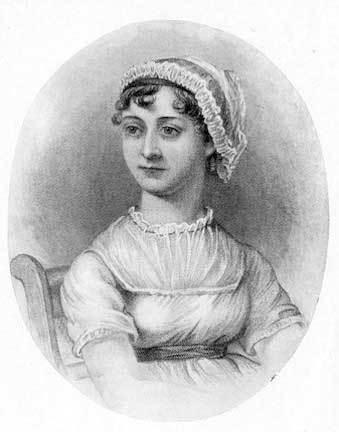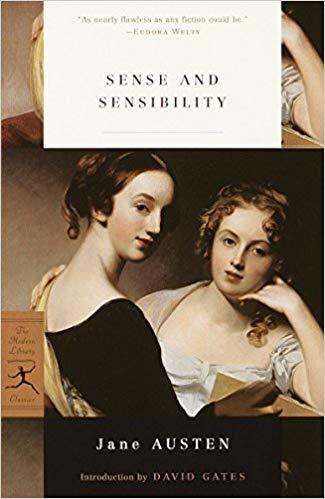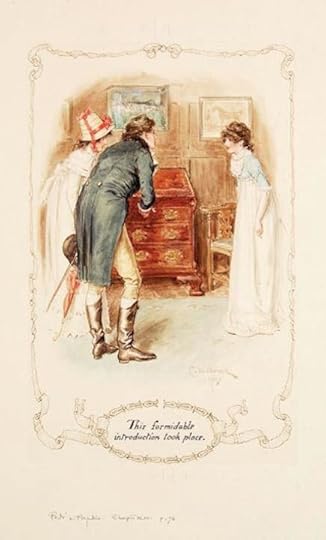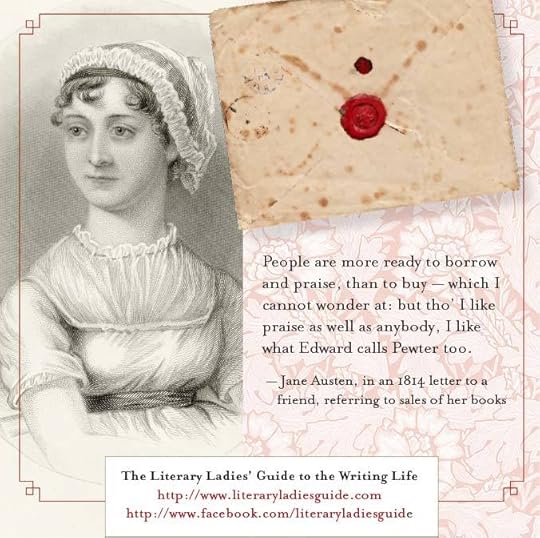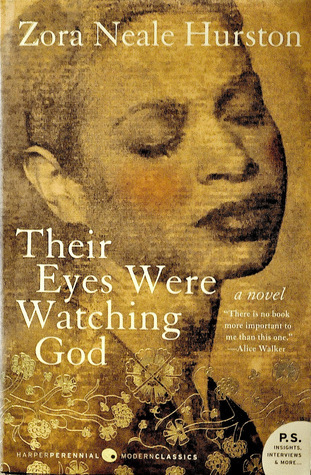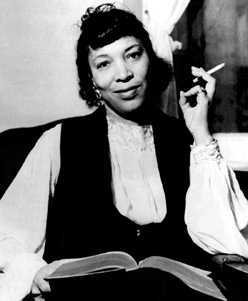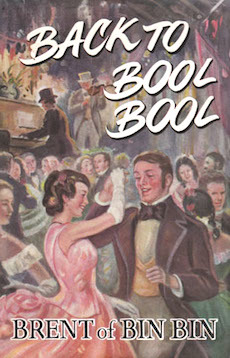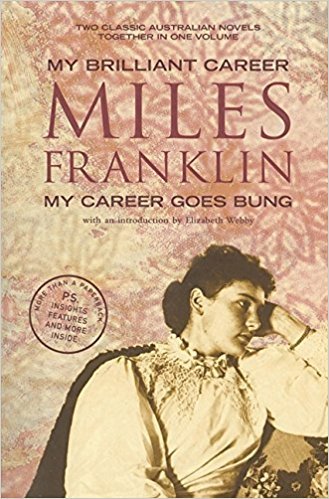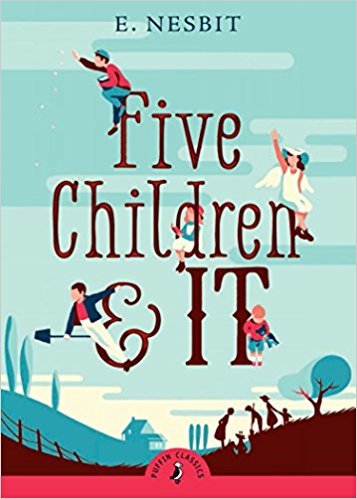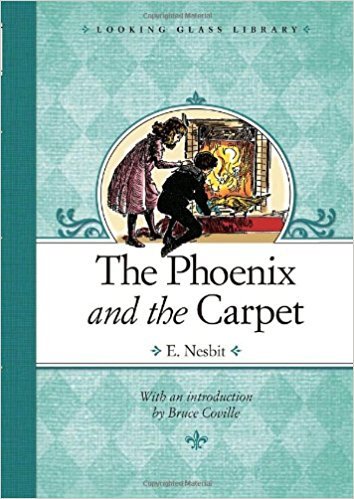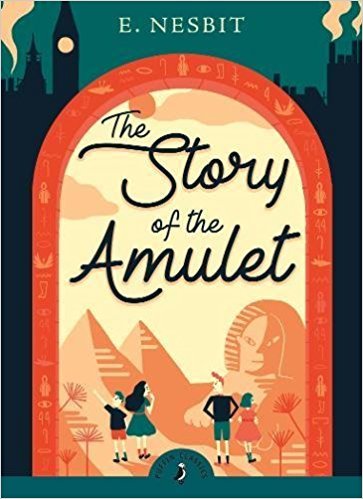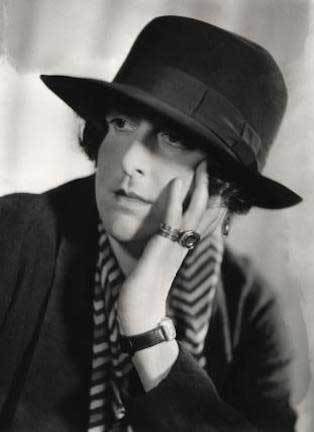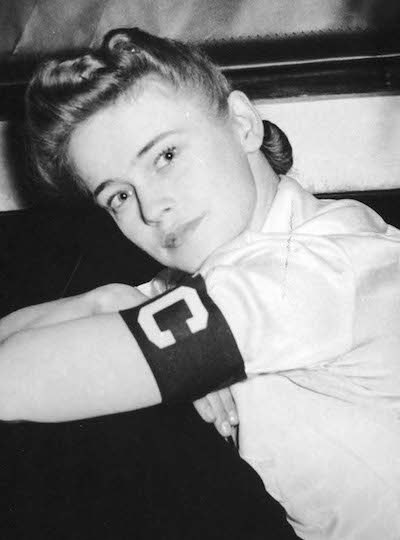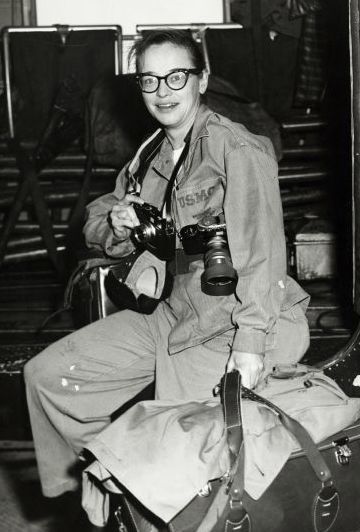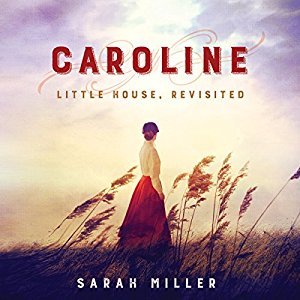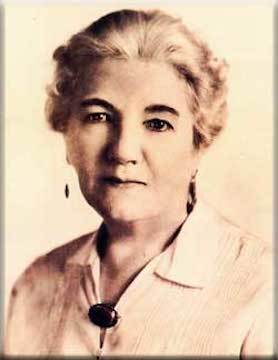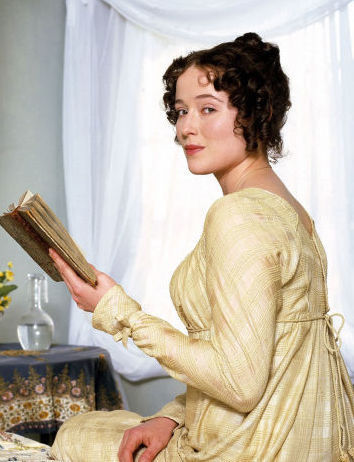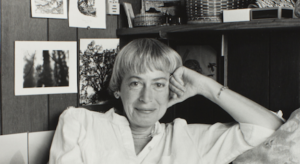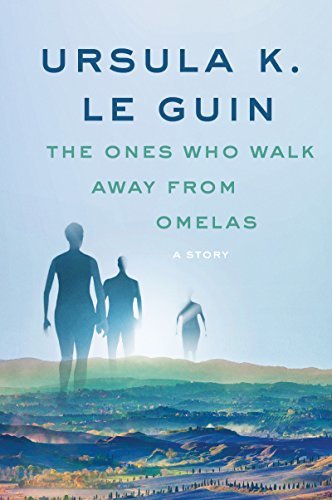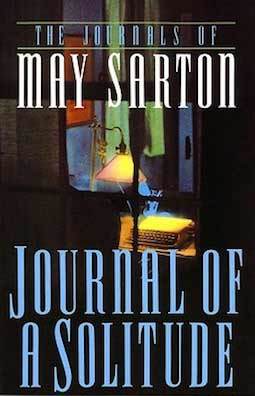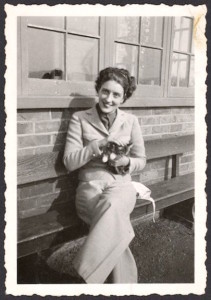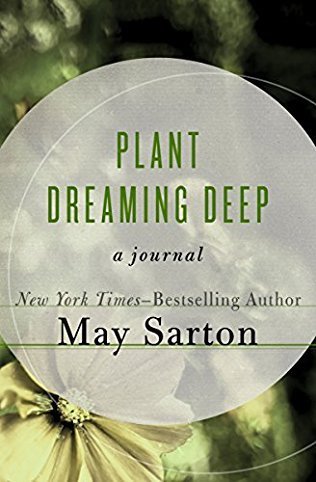Nava Atlas's Blog, page 83
June 24, 2018
Quotes from Sense and Sensibility by Jane Austen
Jane Austen (1775 – 1817) was an esteemed British author known for six distinguished novels that secured her legacy in literary history. Despite myths of her modesty when it came to writing (all of her novels were published anonymously) she cared deeply about getting published and being read. Her first novel, Sense and Sensibility, was published in 1911 under the nom de plume “a Lady.”
Sense and Sensibility is an exquisitely crafted portrait of two sisters, Elinor and Marianne Dashwood who are forced to leave their home after their father’s death. Like other women of their time and class, they must make good marriages. Along the way they encounter meddling matriarchs, conniving rakes, and competitive contemporaries, all standing in their path to love and security.
Following are some beloved quotes from Sense and Sensibility, demonstrating the author’s trademark wisdom and subtle wit.
“The more I know of the world, the more I am convinced that I shall never see a man whom I can really love. I require so much!”
“If I could but know his heart, everything would become easy.”
“Know your own happiness. You want nothing but patience- or give it a more fascinating name, call it hope.”
“I wish, as well as everybody else, to be perfectly happy; but, like everybody else, it must be in my own way.”
“It is not time or opportunity that is to determine intimacy;—it is disposition alone. Seven years would be insufficient to make some people acquainted with each other, and seven days are more than enough for others.”
You might also like: The Biggest Myth About Jane Austen’s Writing Life
“I come here with no expectations, only to profess, now that I am at liberty to do so, that my heart is and always will be…yours.”
“I will be calm. I will be mistress of myself.”
“If a book is well written, I always find it too short.”
“Always resignation and acceptance. Always prudence and honour and duty. Elinor, where is your heart?”
“There is something so amiable in the prejudices of a young mind, that one is sorry to see them give way to the reception of more general opinions.”
“I could not be happy with a man whose taste did not in every point coincide with my own. He must enter in all my feelings; the same books, the same music must charm us both.”
“I have not wanted syllables where actions have spoken so plainly.”
Sense and Sensibility by Jane Austen on Amazon
“She was stronger alone; and her own good sense so well supported her, that her firmness was as unshaken, her appearance of cheerfulness as invariable, as, with regrets so poignant and so fresh, it was possible for them to be.”
“I am excessively fond of a cottage; there is always so much comfort, so much elegance about them. And I protest, if I had any money to spare, I should buy a little land and build one myself, within a short distance of London, where I might drive myself down at any time, and collect a few friends about me and be happy. I advise everybody who is going to build, to build a cottage.”
“But remember that the pain of parting from friends will be felt by everybody at times, whatever be their education or state. Know your own happiness. You want nothing but patience; or give it a more fascinating name: call it hope.”
“Money can only give happiness where there is nothing else to give it.”
See also: Why Has Mr. Darcy Been Attractive to Generations of Women?
“That is what I like; that is what a young man ought to be. Whatever be his pursuits, his eagerness in them should know no moderation, and leave him no sense of fatigue.”
“She was without any power, because she was without any desire of command over herself.”
“You are in a melancholy humour, and fancy that any one unlike yourself must be happy. But remember that the pain of parting from friends will be felt by every body at times, whatever be their education or state. Know your own happiness. You want nothing but patience — or give it a more fascinating name, call it hope.”
“She expected from other people the same opinions and feeling as her own, and she judged their motives by the immediate effect of their actions on herself.”
“…the pleasantness of an employment does not always evince its propriety.”
“Every thing he did was right. Every thing he said was clever. If their evenings at the park included cards, he cheated himself and all the rest of the party to get her a good hand.”
“Shyness is only the effect of a sense of inferiority in some way or other. If I could persuade myself that my manner were perfectly easy and graceful, I should not be shy.”
“For to be unaffected was all that a pretty girl could want to make her mind as captivating as her person.”
*This post contains affiliate links. If the product is purchased by linking through, The Literary Ladies Guide receives a modest commission, which helps maintain our site and helps it to continue growing!
The post Quotes from Sense and Sensibility by Jane Austen appeared first on Literary Ladies Guide.
June 19, 2018
The Gilded Six-Bits by Zora Neale Hurston
In “The Gilded Six-Bits,” a short story, as well as her other works of fiction and essays, one sees Zora Neale Hurston’s wide scope as a writer. She takes on various topics from marital bliss to the national welfare, writing as a gifted author of fiction, a knowledgeable anthropologist, and a rigorous critic. Hurston was a key player in the Harlem Renaissance. Her membership there, however, was never secure. Langston Hughes, once a friend and collaborator, became one of her bitterest detractors.
Always unconventional, she struck many as overly conservative, as she actually promoted southern segregation for a while, arguing that forced integration was an insult to the African-American community. She died penniless and nearly forgotten. Alice Walker (author of The Color Purple) receives credit for tracking down Hurston’s lost grave and bringing her celebrated works back to the public eye.
Today, Hurston is probably the most famous writer from that movement (along with Langston Hughes) and second only to Toni Morrison as a highly acclaimed black woman writer. She published her canonical novel Their Eyes Were Watching God in 1937.
Their Eyes Were Watching God (1937)
A Ritual of Love
In “The Gilded Six-Bits” (1933), Missie May and Joe carry out a playful ritual of tossing the week’s pay in silver coins down the hall and hiding candy kisses in pockets, solidifying their connection and expressing their deep affection for one and other. Their bond is strengthened each week by this predictable game of hide-and-seek that ends with sweetness and a “rough and tumble.”
Both characters are entranced by an outsider, a glamorous, if physically unappealing man who comes into town dripping with gold that proves to be nothing but gilded, nearly worthless coins. The destruction Otis D. Slemmons wreaks on their marriage nearly drives Missie May and Joe apart permanently. Motifs of light, silver coins, the gilded “gold” coin, candy kisses, and the laugh, take on special meaning and hold this story together.
A simple, linear plot line and vernacular language
Hurston, like the poet Paul Lawrence Dunbar, was celebrated for writing what people considered an authentic, African-American version of English. Thus, an invaluable aspect of black culture was preserved and publicized. Writing this way could be both a gift and a liability. When this one expressive mode was promoted or required by publishers at the exclusion of African-American works in “standard” English, this fed stereotypical depictions of an entire race and restricted the freedoms of black writers to express themselves however they wished.
The simple, linear plot and the vernacular language mask the complexity of Hurston’s text. When Joe claims, “Ah know Ah can’t hold no light to Otis D. Slemmons,” he foreshadows the awful moment when, coming home early from work, he will illuminate, with a match, the scene of betrayal in which he finds Missie May and Slemmons in bed together.
Omniscient narration
The omniscient narration reveals much more of Joe’s thought and motivation than it does Missie May’s. Walking home from work where “a lean moon rode the lake in a silver boat,” Joe craves fatherhood and imagines Missie May “making little feet for shoes.” Hurston also incorporates biblical references, authenticating the discourse community she illustrates. Within the linear narration, whole stories open up with a shared set of illusions: “Ah could… drink Jurdan [river] dry.” Bringing a comic edge to a scene of tragedy, Hurston uses the mock-heroic mode with her high-flying diction: “The great belt on the wheel of Time slipped and eternity stood still.”
This sounds as though the narrator describes the epic world of Greek gods (at a mechanic’s shop) instead of a mundane scene of adultery. In a similar metaphorical depiction of the agonies of time, Hurston writes, “The hours went past on their rusty ankles” (94) as Joe and Missie May live through the excruciating crisis in their marriage.
This apparently straightforward story holds various ambiguities. Why did Missie May betray Joe, after all? Was it for money for Joe, a lust for gold, or naive curiosity about an outsider? Was Missie May as lowly as her mother-in-law believed her to be? Did she “fan her foot” (flirt) like her own disreputable mother? Hurston complicates the tale with her open-ended approach.
What White Publishers Won’t Print
Dismantling stereotypes
Through her story, she has dismantled the racist stereotype of the “happy darky” by presenting Joe, a fully drawn, complex character, deeply in love with his wife, somewhat flawed in his vindictive impulses (when he leaves the coin under her pillow as though she were a prostitute), who deals with a horrible situation. She has delivered what William Faulkner demands in his 1950 Nobel Prize for literature address, stories of “the human heart in conflict with itself.”
In “The Gilded Six-Bits,” Zora Neale Hurston offers a story of normal, African-American people dealing with typical human concerns of intimacy, hope, betrayal, and forgiveness. Their dilemmas are universal, in that people from any culture, ethnicity, state of health, sexual orientation, profession, fashion category, or social class, etc., can relate to them.
Hurston’s story is just the type of literature she calls for in her editorial, “What White Publishers Won’t Print” (1950) published in I Love Myself When I am Laughing … And Then Again When I am Looking Mean and Impressive, edited by Alice Walker (Feminist Press, 1979). In this article, she argues that U.S. publishing companies only publish books by African-Americans that “treat the race problem.” Why? Well, because stories of racial tension sold well in the 1950s just before the rise of the Civil Rights movement.
Hurston argues, in a risky and provocative way, that these typical texts promote negative stereotypes of African-Americans and other non-white segments of the population. The lack of knowledge that North Americans have about each other is deeply divisive, truly a national crisis when post-WWII U.S. needed to come together. She warns, “Man, like all the other ani.mals fears and is repelled by that which he does not understand, and mere difference is apt to connote something malign.”
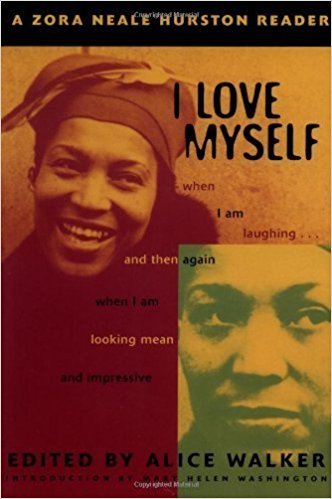
See also: I Love Myself When I am Laughing …
Hurston demands, “For the national welfare, it is urgent to realize that the minorities do think, and think about something other than the race problem.” Her works constitute a marvelous effort to address this need for everyday stories about everyday people who are not white.
At the very end of the story, the question of race does come up, but on Hurston’s terms. Joe resumes the bonding ritual with Missie May by spending his silver coins at the candy store. The white store clerk’s ignorant and stereotypical comment, “Wisht I could be like these darkies. Laughin’ all the time. Nothin’ worries ‘em,” evokes the “sambo” stereotype of the happy, carefree black man. With great dramatic irony, the clerk enacts the misreading of a stranger while the reader understands that Joe is far deeper than a surface caricature. He has suffered tremendous loss, conflict, and heartache, and is in the process of forgiving his wife, accepting their son, and healing their marriage.
— Contributed by Sarah Wyman, Associate Professor of English, SUNY-New Paltz, © 2018
References
Zora Neale Hurston, The Complete Stories, Harper, 1995.
Zora Neale Hurston, I Love Myself When I am Laughing…And Then Again When I am Looking Mean and Impressive, edited by Alice Walker (Feminist Press, 1979).
The post The Gilded Six-Bits by Zora Neale Hurston appeared first on Literary Ladies Guide.
June 17, 2018
Miles Franklin: “Brent of Bin Bin,” My Career Goes Bung, and More
Miles Franklin (1879 – 1954) is best known for her first novel, My Brilliant Career. Published in 1901, when the author was just 21, it’s a semi-autobiographical story of a teenage girl growing up in the Australian bush who longs to break free as her own person. Just after the novel’s publication and early success she wrote only sporadically, having become involved in World War I efforts and the woman suffrage cause.
During this period, she wrote a sequel to My Brilliant Career titled My Career Goes Bung, finishing it around 1915 –1916. But it proved too far ahead of its time and wasn’t published until some decades later.
In the 1920s, Franklin wrote a set of historical novels set in the Australian bush and published them under the odd pseudonym “Brent of Bin Bin.” She worried that nothing she did would ever live up to the success of My Brilliant Career. She was also daunted by the prospect of negative reviews and believed that using a nom de plume would shield her from them.
Under this pseudonym, Up the Country (1928), Ten Creeks Run (1929), and Back to Bool Bool (1931) came out in quick succession. This suite of Brent of Bin Bin novels would grow to six volumes, but the remaining three didn’t appear until the 1950s.
By the time the eagerly received My Career Goes Bung was published in 1946, there was some suspicion that “Brent of Bin Bin” might have been written by the same pen. Here is one such article from that year that posited this theory:
Who is “Brent of Bin Bin”?
From the original article in The Age, Melbourn, Australia – August, 1946: Recently, a Melbourne literary society held an informal discussion on the subject, “Who is ‘Brent of Bin Bin?’” The identity of the author of Up the Country, Ten Creeks Run, and Back to Bool Bool has never been clearly established – at least not publicly.
Some speakers professed to have conclusive evidence that the pseudonym is that of Miles Franklin; others were equally positive that “Brent” was the pen name of a writer living in England, though it was conceded that “he” and Miss Franklin might have collaborated. The discussion did little more than deepen the mystery.
Brent of Bin Bin books on Amazon
It is possible that Miss Franklin does not relish these attempts to pry into her secret. She has stated, sometimes obliquely, sometimes definitely, that she is not “Brent.” Obviously she has a valid reason for maintaining secrecy. But it is perhaps only natural that readers who have noticed any resemblances between her own and “Brent’s” books – similarities of style, content, locale – should at least be curious.
A pointer to “Brent’s” identity might be given in Miles Franklin’s latest book, My Career Goes Bung. Her first book, My Brilliant Career, was published in 1901 by William Blackwood and Sons (who also published the “Brent” series). A fictitious autobiography of “Sybylla Melvyn,” a young Australian bush girl, from childhood to her 21st year, it was a remarkable achievement for a bush-bred girl of sixteen.
My Career Goes Bung
In My Career Goes Bung, Sybylla now reappears to tell of the trouble in which that first literary venture involved her. When her English publishers, “Messrs. McMurwood,” suggest a new edition of her first book, she declines the offer, adding: “In future I could have a nom de plume, carefully guarded, so that my attempts could be taken on their own demerits without the impetus of scandal …”
My Career Goes Bung on Amazon
Second Publication
Miles Franklin’s second book, Some Everyday Folk and Dawn, appeared in 1909. Then followed an interval of 22 years before her next novel, Old Blastus of Bandicoot, was published. During part of that period she was in America and England. The “Brent of Bin Bin” books appeared between 1928 and 1931, and generally received higher commendation than Miss Franklin’s work.
Even her prize-winning chronicle novel, All That Swagger (1936), was compared adversely to the “Brent” series by some critics – a point in which she has not failed to note. This is not the place to attempt an exhaustive inquiry into the relationship, nor to comment on the implications, but is it not conceivable that the paragraph quoted might have some significance? But perhaps Sybylla alone could provide the answer!
My Career Goes Bung is, as the author says, “an irrefutable period piece … equally as autobiographical as my first printed piece; no more, no less.” Sybylla tells how she secretly wrote the manuscript of My Brilliant Career, submitted it to “our greatest Australian author” (Henry Lawson wrote the preface to My Brilliant Career) and how some time later she was astonished to receive “six presentation copies” of the book from the overseas publisher.
Trouble Begins
Then the trouble began! The inhabitants of ‘Possum Gully, Stony Flat, Stringbark Hill and adjacent districts identified themselves with her imaginary characters. It was generally held to be “indelicate” for a young girl to have written a book at all. Neighbors were offended, the church shocked, her family commiserated with. But the book was read, and eventually the young author received an invitation to stay with Sydney friends.
In Sydney, Sybylla was introduced to “society,” lionized as a “budding genius.” However, she survived the month’s ordeal — and the attentions of a number of amorous gentlemen — and returned to the drought-stricken dairy farm near Goulbourn, much richer for the experience, though feeling that her “career had gone bung.”
There is much lively humor (and some delicious satire) in this little book, an intense love of country, an intolerance of all forms of humbug and “un-Australian” attitudes. The manuscript of My Career Goes Bung, rescued from the depths of an old trunk, was designed as a “corrective” to the earlier work. What faults there are may be attributed to the inexperience of this high-spirited and rebellious 20-year-old bush girl writing in the early part of the century.
More about My Career Goes Bung by Miles Franklin
Wikipedia
Reader discussion on Goodreads
More about “Brent of Bin Bin”
National Library of Australia
About Brent of Bin Bin at The Australian Treasure
The post Miles Franklin: “Brent of Bin Bin,” My Career Goes Bung, and More appeared first on Literary Ladies Guide.
June 14, 2018
The Five Children and It Trilogy by E. Nesbit
Five Children and It was the first of a trilogy by E. Nesbit (1858 – 1924), followed by The Phoenix and the Carpet and The Story of the Amulet. In those books the readers met Robert, Anthea, Jane, Cyril, and the baby called The Lamb. But it was not the children who fascinated readers, and Nesbit had no intention that they should, for all her life she love magic. So it was a first the Psammead and then the Phoenix that she placed in the foreground.
This was deliberately and carefully done so that she, who created in the Bastables one of the most vivid families in all of children’s literature, could be sure the children in this trilogy were so faintly drawn that none of us would recognize them if we met them in the street, whereas nobody could in contrast miss either the Psammead or the Phoenix.
The following description of Five Children and It is adapted from her autobiography Long Ago When I was Young (Franklin Watts, 1966). It was written by Mary Noel Streatfeild (herself the author of a classic children’s book series known as the “shoes” books, which began in 1936 with Ballet Shoes):
Introducing the Psammead
The Psammead, when it was first seen in Five Children and It, was coming out of the sand yawning and rubbing its eyes. It was a strange creature:
“Its eyes were on long horns like a snail’s eyes, and it could move them in and out like telescopes; it had ears like a bat’s ears, and its tubby body was shaped like a spider’s and covered with thick short fur, and it had hands and feet like a monkey’s.”
But is was not its appearance that made it immediately popular with everybody who read the book; it was its personality. It was the most contrary beast.
“It isn’t talking I mind — as long as you’re reasonably civil. But I’m not going to make polite conversation for you. If you talk nicely to me, perhaps I’ll answer you and perhaps I won’t. Now say something.”
Now what child faced with such a command could find anything to say?
Like all her best creations E. Nesbit knew far more about the Psammead that she told her readers. She had knowledge of its life over thousands of years. As well, she knew how it would make out in its future and in the past. The Psammead was so sly about its ability to grant wishes, yet it was dignified at the same time. It had to grant wishes, like it or not, but it never admitted to it, always it hinted that it could refuse a wish if it wanted to.
“You want another wish I expect. But I can’t keep on slaving from morning to night giving people their wishes. I must have some time to myself.”
All who read Five Children and It waited eagerly or the next book about the Psammead, but they had to wait, which must have been a disappointment. For E. Nesbit had promised that it would come back. The promise had been given at the end of Five Children and It. The Psammead, on its way into the Past, heard one of the girls say: “I hope we shall see you again some day.” Its weak but still dry and husky voice asked: “Is that a wish?” “Yes, please,” said the girls. Then the Psammead, as it did when it was wish granting, blew itself up before disappearing in the sand.
Five Children and It on Amazon
The Phoenix and the Carpet
Although E. Nesbit did not give her readers the Psammead in her next book, two years later she published The Phoenix and the Carpet about the same family of children. What a bird was the Phoenix! Its golden egg arrived rolled up in a magic carpet.
The children put the egg on the nursery chimney-piece and it would never have hatched out if they had not tired to build a magic fire. The bird, exquisitely beautiful, rose from the flames saying, as it perched on the fender:
“Be careful; I am not nearly cool yet.” Later, when in singed the tablecloth, it said, “It will come out in the wash.” A startling memory feat for a bird who had been hatched out two thousand years before.
The Psammead had been well educated, but the Phoenix was only superficially brilliant. It covered what it did not know with what it had picked up two thousand years before. It was conceited beyond bearing, but so beautiful it was hard not to forgive it. Besides, it knew some delightful things. “These wishing creatures know all about each other — they’re so clannish; like the Scots you know — all related.”
The Phoenix could not, of course, grant wishes but it didn’t have to for there was the magic carpet. It was at its best when all the children plus the cook travelled on this magic carpet to “a sunny southern shore.”
The Phoenix, like the Psammead, though vastly popular with E. Nesbit’s readers was allowed to vanish, but alas, it vanished for good. It left presents and one golden feather behind it. It departed for ever as it had arrived — in the heart of a magic fire.
The Phoenix and the Carpet on Amazon
The return of the Psammead
Then two years later the Psammead was back. It came in The Story of the Amulet. Nothing shows more clearly how hard E. Nesbit tried not to allow the creatures of her imagination rule her stories the way she allowed the Psammead to return. She had promised her readers that he would, and she kept that promise, but only insofar as he fit in with her new interests.
The poor creature reappeared in a most humiliating way. The children found it for sale in a pet shop, where it was called a ‘mangy old monkey.’ It could not be said to be humbled by its circumstances, nothing could get it to do that, but it almost pleaded with the children to get it away.
… From the beginning, even though it could no longer grant the children’s wishes, the Psammead stole the story. It utterly refused to be kept in its place. “You’ve saved my life and I am not ungrateful — but it doesn’t change your nature or mine. You’re still very ignorant, and rather silly, and I am worth a thousand of you any day of the week.”
If E. Nesbit’s readers hoped because the Psammead was back he was going to remain with them they were disappointed. By the end of The Story of the Amulet she had finished with amulets and Psammeads … The Psammead vanished, to live as far as is know forever, by the great temple of Baalbec. (—Mary Noel Streatfeild)
The Story of the Amulet on Amazon
More about The Five Children and It trilogy by E. Nesbit
Wikipedia
Reader discussion on Goodreads
Dramatic reading on Librivox
Five Children and It (2005 film)
*This post contains affiliate links. If the product is purchased by linking through, The Literary Ladies Guide receives a modest commission, which helps maintain our site and helps it to continue growing
The post The Five Children and It Trilogy by E. Nesbit appeared first on Literary Ladies Guide.
Vita Sackville-West
Vita Sackville-West (March 9, 1892 – June 2, 1962), was a British poet, novelist, and garden designer. Born at Knole Park, a 365-room ancestral home, her writing career was launched with the publication of Poems of East and West.
She’s known for her private life and as a master gardener perhaps much as her literature. She was bisexual and had many affairs with women, including Virginia Woolf. It’s believed that she was the inspiration for the title character of Woolf’s novel, Orlando.
Vita was part of the literary Bloomsbury circle, which included Woolf and her husband, Leonard, as well as E.M. Forster, Lytton Strachey, John Maynard Keynes, and others.
Early life
Now in the care of the National Trust, Vita Sackville-West grew up at Knole in Kent, the famous “calendar house” with its three hundred sixty five rooms, fifty-two staircases, twelve entrances, and seven courtyards. Born to Lionel Sackville-West and his Spanish wife, Victoria, (his first cousin and the daughter of his uncle’s mistress), the couple split when Vita was young.
She was educated at home schooled during her earlier years, later attending Helen Wolff’s school for girls. Not one to befriend her peers easily, her biographies paint her childhood as lonely. While attending the school for girls, Vita met Violet Keppel and Rosamund Grosvenor, with whom she’d later develop intimate affairs.
Vita’s mother, Victoria, was courted by many men, most notably financier J.P. Morgan and Sir John Murray Scott. Vita spent a great deal of time with the latter during her childhood at his home in Paris, perfecting her French. Vita’s father, Lionel, had a relationship with an opera singer, moving her into Knole. The Sackville family inheritance custom disallowed for females to inherit the estate, and as the only child born to her parents, Knole was bequeathed to her father’s younger brother, the fourth Baron Sackville.
Vita had written prolifically at Knole, penning eight novels (unpublished), ballads, and plays while living there. The loss of Knole haunted Vita, especially in 1947 when signing the property over to the National Trust. She wrote that “the signing… nearly broke my heart, putting my signature to what I regarded as a betrayal of all the tradition of my ancestors and the house I loved.”
You might also like: Quotes by Vita Sackville-West
Open marriage
At age 21, Vita married Harold George Nicolson, a wealthy writer, politician, and diplomat who was also bisexual. The couple engaged in an open marriage, courting many same-sex affairs, fashioning a relationship structure ahead of its time. The couple had two sons, Nigel and Benedict. Nigel would later combine his mother’s diaries with his own observations in Portrait of a Marriage, the confessional autobiography Vita had written during her relationship with Violet Keppel.
One of the most notable of Vita’s affairs was with childhood friend Violet Keppel, which began before Vita’s marriage to Harold. By the age of sixteen, Vita and Violet had developed a strong emotional bond, and by their twenties were romantically involved. The relationship continued through Vita’s eventual marriage to Harold in 1913.
Later, Vita would become deeply infatuated with Virginia Woolf. The connection began in 1922, when Virginia Woolf was forty years old, ten years Vita’s senior. Upon meeting, Vita was instantly attracted. After meeting Woolf, she wrote in a letter to Harold dated in December 1922,
“I simply adore Virginia Woolf, and so would you. You would fall quite flat before her charm and personality… Mrs. Woolf is so simple: she does give the impression of something big. She is utterly unaffected: there are no outward adornments — she dresses quite atrociously. At first you think she is plain, then a sort of spiritual beauty imposes itself on you, and you find a fascination in watching her. She was smarter last night, that is to say, the woollen orange stockings were replaced by yellow silk ones, but she still wore the pumps. She is both detached and human, silent till she wants to say something, and then says it supremely well. I’ve rarely taken such a fancy to anyone, and I think she likes me. At least, she asked me to Richmond where she lives. Darling, I have quite lost my heart.”
Vita became Virginia’s lover and muse, and went on to inspire her groundbreaking 1928 novel Orlando.
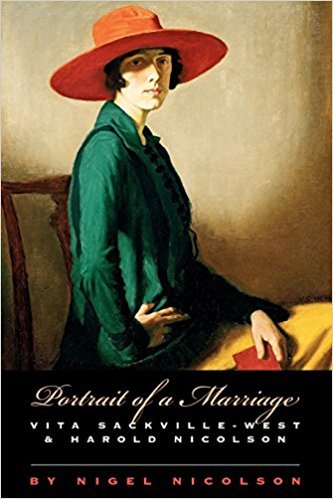
See also: Portrait of a Marriage: Vita Sackville-West and Harold Nicolson
Career and legacy
Vita chose the Hogarth Press (the publishing house run by Virginia Woolf and her husband, Leonard) to be her publisher for Seducers in Ecuador in 1924. The novel wasn’t as successful as she’d hoped, selling just 1,500 copies in its first year. The Edwardians, her second novel published with Hogarth Press in 1930, on the other hand, was a huge success. It sold 30,000 copies in its first six months, arguably remaining as one of her best known works. In 1932, Vita published Family History, boldly tackling the subject of lesbianism.
Vita focused mainly on fiction, but also used her considerable passion for gardening to produce essays and columns on the subject. In 1947, Vita was made a Fellow of the Royal Society of Literature and Companion of Honour. Her distinguished body of work includes twelve poetry collections, seventeen novels, and nine works of non-fiction and biographies.
Vita died at Sissinghurst at age seventy from abdominal cancer. She was cremated and her ashes buried in the family crypt in eastern Sussex. Her son Nigel lived at Sissinghurst after her death, and after his own passing in 2004, his son moved in with his family. The gardens Vita and Harold designed at Sissinghurst Castle are still visited and admired today.
More about Vita on this site
Quotes by Vita Sackville-West
The Butterfly of the Moment
Major Works
The Edwardians
All Passion Spent
Saint Joan of Arc
Twelve Days in Persia
In Your Garden
Passenger to Teheran
No Signposts in the Sea
Autobiographies
Violet to Vita: The Letters of Violet Trefusis to Vita Sackville-West, 1910-1921
The Letters of Vita Sackville-West and Virginia Woolf
Biographies about Vita Sackville-West
Portrait of a Marriage: Vita Sackville-West and Harold Nicolson by Nigel Nicolson
Vita: The Life of V. Sackville by Victoria Glendinning
More Information
Wikipedia
Amazon.com
Reader discussion on Goodreads
Visit Vita Sackville-West’s home
Sissinghurst Castle – Weald of Kent, UK
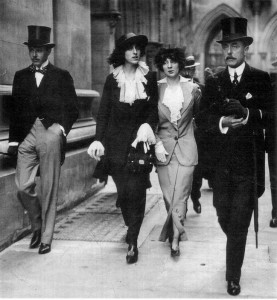 Harold Nicolson,Vita Sackville-West, Rosamund Grosvenor & Lionel Sackville-West, 1913
Harold Nicolson,Vita Sackville-West, Rosamund Grosvenor & Lionel Sackville-West, 1913
*This post contains affiliate links. If the product is purchased by linking through, The Literary Ladies Guide receives a modest commission, which helps maintain our site and helps it to continue growing!
The post Vita Sackville-West appeared first on Literary Ladies Guide.
June 12, 2018
Dickey Chapelle: Photojournalist and War Correspondent
Dickey Chapelle (March 14, 1919 – November 4, 1965) was a pioneering American war correspondent and photojournalist who covered world conflicts from World War II to Vietnam.
Born Georgette Louise Meyer, she was fascinated by air travel throughout her childhood in Milwaukee, Wisconsin. She renamed herself after the explorer Admiral Richard “Dickey” Bird.
Even as a child, Georgie Lou, as she was called, marched to her own drum. She was short and nearsighted, and always quirky and precocious. From a young age, she dreamed of flying planes. She was patriotic — always saluting the flag on her way to school. “I believed I could do anything I wanted to do, and I still believe it.”
Her father gave her a taste for adventure, and encouraged her to reach for her dreams. Her mother wanted her to be an English major, and perhaps become a writer. She had other ideas, though; she wanted to become an engineer. Her mom did her best to discourage her from her interest in planes.
Obsessed with aviation
Dickey was precocious. She skipped a grade and by age sixteen, graduated high school. The class valedictorian entered the Massachusetts Institute of Technology (MIT) to study aeronautical design on a full scholarship. Alas, the classroom bored her and she flunked out after two years, itching for more hands-on experience, and some adventure in the skies.
Going to work at a local air field, Dickey photographed planes and wrote articles about them. However, when her mother learned that she’d been having an affair with a pilot, she sent her to live with her grandparents in Coral Gables, Florida. This did nothing to dampen her interest in planes nor in having adventures.
She took flying lessons and logged hours in her pilot’s book. wrote releases for a local air show, which landed her an assignment in Havana, Cuba. She submitted a story on an air show disaster that took place in Cuba to The New York Times, which in turn caught the eye of Transcontinental and Western Air (TWA). She moved to New York City to work in this airline’s publicity bureau.
Watch this fascinating documentary about Dickey Chapelle:
“Behind the Pearl Earrings”
Introduction to photography
It was in New York City that Dickey met Tony Chapelle, a former naval photographer, while taking his classes in photography. “The picture is your reason for being,” is a lesson she learned from him. Twenty years older than she and much more worldly, she married him in 1940. No doubt he helped launch her professional career, and the two seemed a good match, at least at first.
She sold her first portfolio of photos to Look magazine the following year. One thing Tony neglected to tell her was that he was still married to his first wife; and he was known as something of a con artist. Yet for all of that, Dickey stayed with him for fifteen years before they their marriage was annulled.
When Dickey started freelancing after studying with Tony, she worked for a number of women’s magazines, but her photos were rather mediocre. She wasn’t and would never become a technician, but what she lacked in technical skills she made up with an eye for the dramatic and she was a master at composition.
First big break: World War II
Dickey Chapelle’s first big break was a story she sold to the New York Times detailing how American pilots were enlisting in in the Canadian Air Force to fight against Hitler.
Dickey was then hired by National Geographic as a war correspondent and photojournalist during World War II. She covered U.S. Marines on training missions as well as the battles of Iwo Jima and Okinawa. Women rarely covered combat, so this was an unusual achievement. The only other prominent female photojournalist was Margaret Bourke-White, who worked for Life magazine. Dickey was willing to go into harm’s way, especially in service of the troops. During the war, one editor she worked for fired her because her photos were too graphic.
A commitment to covering global conflicts
After World War II, Dickey continued to cover major wars and conflicts around the globe. Bold and fearless, she would do whatever it took to get close to the action to get close to battle zones.
Dickey was petite and became known for her unique style: At work on the battlefield, she wore pearl earrings, Harlequin glasses, and an Australian bush hat with her combat fatigues. It was her way of showing she wasn’t just “one of the boys” but that she still deserved her place in a man’s world. Yet she never asked for any favoritism or concession for her gender.
She said, “The main thing you have to remember about covering combat is that you have to survive to get the picture and the story out to the world.” She was described as feisty, tough as nails, and hard-bitten. She never wanted her gender to get in the way but also felt she had to prove herself. She told the stories she wanted to tell, on her own terms. Concerned with the troops, she also wanted to give voice to civilians caught in the crossfire.
Arrested as a spy
Dickey’s fearlessness got her into a number of scrapes. While covering the Hungarian Revolution in 1956, she also agreed to transport penicillin to Hungarian refugees. She was caught and arrested as a spy by Russian forces (the Red Army).
On the way to her interrogation, she wrapped her small camera in a glove and tossed it out the window. She was told she would be hanged. Still, she spent nearly two months in a Hungarian prison, as a prisoner of the Russians, 38 days of which were in solitary confinement.
Anti-war but pro-military
Dickey wrote that the purpose of her work was to to document “the wreckage resulting from man’s inhumanity to man.” She wanted to share personal stories of those in combat with the rest of the world. She wasn’t pro-war, but was definitely pro-military.
In the course of her career, Dickey the Algerian rebels, Fidel Castro’s Cuban revolution, Post-war Korea, Laos, and more. At age forty, she received permission to parachute jump with troops, the first female to do so, and she jumped six times.
Dickey Chapelle on the USS Boxer
Photo: Wisconsin Historical Society
Vietnam, and death in the field
She spent a lot of time traveling back and forth from Vietnam in the 1960s to cover the war, and took the first photograph of an American soldier engaged in combat.
In 1965, Dickey was with the U.S. Marines near Chu Lai Air Base. She was walking behind a lieutenant who accidentally tripped a landmine and she was hit in the neck by a piece of shrapnel, severing an artery. She died from her wound, at age forty-seven. A statement by the marines: “She was one of us, and we will miss her.” She was buried with full military honors, something quite unusual tribute for a civilian journalist.
Legacy
Always bold and fearless, Dickey Chapelle documented global conflicts from World War II through Vietnam. In her thirty-year career as a war photojournalist, she earned great respect in a profession that had been unfriendly, if not completely closed, to women who came before her. That respect came from both the military and from the press, and she received many prestigious awards. The United States Marines honor her memory with the annual Dickey Chapelle Award, which is given to recognize women who have contributed “to the morale, welfare and wellbeing of the corps.”
Dickey received the George Polk Memorial Award, the Overseas Press Club’s highest honor, in 1961. Her citation read that she could “hold her own with men twice her size when it comes to covering a war.” Her autobiography, What’s a Woman Doing Here? A Combat Reporter’s Report on Herself, describes her trial by fire in her quest to become a war correspondent.
Dickey Chapelle was the first American female reporter to be killed in action and the female war correspondent to be killed in Vietnam.
“[War] is not a woman’s place. There’s no question about it. There’s only one other species on earth for whom the war zone is no place, and that’s men. But as long as men continue to fight wars, I think observers of both sexes will be sent to see what happens.”
“When I die, I want it to be on patrol with the United States Marines.”
More about Dickey Chapelle
Wikipedia
The Heroine Collective
Wisconsin’s Pioneering War Correspondent
The post Dickey Chapelle: Photojournalist and War Correspondent appeared first on Literary Ladies Guide.
Caroline: Little House, Revisited by Sarah Miller
Caroline: Little House, Revisited by Sarah Miller is a captivating novel that illuminates one courageous, resilient, and loving pioneer woman as never before — Caroline Ingalls, “Ma” in Laura Ingalls Wilder’s beloved Little House books. It’s now available in paperback (as well as in audio and e-book editions).
For over 80 years, the Little House stories of Laura Ingalls Wilder have captivated generations of audiences. Caroline: Little House, Revisited is a fresh look at the classic Little House on the Prairie, told through the eyes of Caroline “Ma” Ingalls. In this novel, authorized by Little House Heritage Trust, Sarah Miller vividly recreates the beauty, hardship, and joys of the frontier in this dazzling work of adult historical fiction.
Caroline “Ma” Ingalls has forever been a mainstay in the world of Little House, but readers have yet to experience her story. In Caroline: Little House, Revisited, Sarah Miller’s research into family letters and Wilder’s handwritten drafts and manuscripts, along with an in-depth look into Pioneer Girl and the Little House canon, shapes a magnificent portrait of the matriarch so many of us have grown to love.
During the frigid winter of 1870, Caroline Ingalls and her family leave the Big Woods of Wisconsin for a new life in Kansas’s Indian Territory. The pioneer life is a hard one, especially for a pregnant woman with no friends or kin to turn to for comfort. In adapting to this strange new place, Caroline must draw on untapped wells of strength she does not know she possesses to forge a home, raise children, and survive.
Deprived of the support network they depended on in Wisconsin, work is daunting and the days are lonesome, yet Caroline’s life is still filled with tender joys, especially in her husband and children. Caroline’s experiences provide an entirely new point of view for readers who grew up with Laura’s perspective on the adventure of pioneering.
Not only will Caroline: Little House Revisited appeal to grown up Little House enthusiasts, but all readers of compelling historical fiction will be entranced by Miller’s conceptualization of the Ingalls family.
Caroline: Little House, Revisited by Sarah Miller on Amazon
Caroline: Little House Revisited — how it begins:
Caroline’s wrist turned and flicked as the steel tongue of her crochet hook dipped in and out, mirroring the movement of the fiddle’s bow. With each note, the white thread licked a warm line across her finger. Her pattern had just begun to repeat, chorus-like, as the tune ended. She smoothed the frilled cluster of scallops against her cuff and smiled. So long as she could keep ahead of the mending, a pair of lace wrists would freshen her second-best wool before snowmelt. There would be no time for a collar — once the trees began to bud, she must turn her hans to the tedious seams of a new set of diapers, bonnets, and gowns.
Charles rested the fiddle on his knee and primed himself with a breath.
“What is it, Charles?” Caroline asked, plucking a slouching festoon of thread into place.
“I’ve had an offer for this place,” he said.
Carolines hook stilled. “An offer?”
“Gustafson’s agreed to pay one thousand twelve dollars and fifty cents for our half of this quarter section.”
The sum swept her mind clean as a gust of wind. “My goodness,” she said. One thousand twelve dollars And the delightful absurdity of fifty cents besides, like a a sprinkling of sugar. They could use it to buy a week’s worth of satin hair ribbons for Mary and Laura …
(Excerpt from Caroline: Little House, Revisited by Sarah Miller. Copyright © 2018 by Sarah Miller. Reprinted by permission of William Morrow, an imprint of HarperCollins Publishers)
Reviews of Caroline
“Beguiling, pulse-pounding historical fiction.”—Kirkus
“Not to be missed by Wilder’s grown-up fans or those who enjoy historical fiction about the settling of the American West in the late 1800s.”—Library Journal
“A stunning novel…Miller’s research is impeccable and her writing exquisite.”
—Historical Novel Society
“Full of lyrical descriptions of the wild beauty of the Kansas countryside, Caroline is a well-researched and thoughtful look at the inner life of one of America’s most famous frontier women.” —BookPage
About the author
Sarah Miller began writing her first novel at the age of ten, and has spent the last two decades working in libraries and bookstores. She is the author of two previous historical novels, Miss Spitfire: Reaching Helen Keller, and The Lost Crown. Her non-fiction debut, The Borden Murders: Lizzie Borden and the Trial of the Century, was hailed by the New York Times as “a historical version of Law & Order.” Sarah lives in Michigan.
Learn more about Laura Ingalls Wilder
*This post contains affiliate links. If the product is purchased by linking through, The Literary Ladies Guide receives a modest commission, which helps maintain our site and helps it to continue growing!
The post Caroline: Little House, Revisited by Sarah Miller appeared first on Literary Ladies Guide.
June 8, 2018
On First Reading Pride and Prejudice
I first read Jane Austen’s Pride and Prejudice in the spring of 2005, while my mother-in-law recuperated in rehab from a broken leg. A year earlier she moved in with my husband Bruce and me. It had been a difficult year, and she was soon to return. I wanted to make things easier for all of us, and was earnestly making lists of how to do that. “This time it will be different,” I told myself. And I turned back to Pride and Prejudice.
Flo Gibson narrates the Pride and Prejudice audio book. Flo (I think of her as Flo) pronounces the famous opening sentence: “It is a truth universally acknowledged, that a single man in possession of a good fortune, must be in want of a wife.” And off we went again. She never tired of reading to me and I never tired of listening.
Entering the world of Pride and Prejudice
Each time I entered the world of Pride and Prejudice, I felt a physical high. Each time, listening or reading, my only responsibility to this fictional world was to continue listening or reading. The novel’s wit and irony provided relief. Those single men in possession of good fortunes… do they know they are in want of wives?
Pride and Prejudice asked nothing of me. I could like or dislike the characters in the novel and it did not matter, my emotions were safe to roam.
Listening to Flo, spatial awareness dissolved. I bumped into corners, or got a shirt caught on a doorknob. Getting ready for bed, Bruce would ask me, “How did you get that bruise on your arm … your thigh?”
“I wasn’t paying attention. I ran into something.” In fact, I was paying attention—just not to the world I materially inhabited. Pride and Prejudice took up residence in my brain and shifted the furniture inside of it.
I asked Bruce, “What’s the matter with me? Why can’t I stop doing this?”
Bruce replied, “I’m glad you have passion.” He did not see it as an addiction. But it felt like an addiction. Like one of Austen’s characters—Catherine Morland in Northanger Abbey or Edward Denham in Sanditon — I was possessed by books: hers.
You might also like:
10 Memorable Quotes from Pride and Prejudice
A passion or an obsession?
Another day, another discussion of my obsessive reading. Cabin fever, Bruce said. It’s Texas; it’s summertime; it’s hot. We use cabin fever to explain any abnormal behavior that occurs during the long hot Texas summers.
I did not want my love of Austen’s writing reduced to cabin fever. “No,” I said, “It is her humor. It restores – or enhances – or stirs my faith in humanity. That there is a writer like that.”
Maybe my love for Pride and Prejudice was a passion, not an obsession. I asked my journal, Why can’t I have a passion for P and P? Isn’t something that gives me joy intrinsically worth doing? I thought of the one hundred times that Michael Cunningham read Mrs. Dalloway before he wrote his novel The Hours.
I vacillated: passion, one day; obsession, the next. I wrote in my journal, Not so much pray to be relieved from this obsession over P & P but that its meaning might reveal itself to me.
My friend Pat knew about my non-stop immersion in Pride and Prejudice. I asked her, “What’s come over me?”
She reassured me that it was okay to be so enthralled by Austen. It was not a fixation. “You are learning from it. It is very important to you. You are working it out. It will be revealed to you.”
The BBC’s 1995 Pride and Prejudice opens with the central male figures, Bingley and Darcy, on horseback galloping over the English countryside. Screenwriter Andrew Davies invented that image to represent how, once begun, the story of Pride and Prejudice moves like a swift horse, galloping away with us, never letting up. Medical crises are like that, too, except with time in waiting rooms to ruminate, worry, and try to read.
A salve for a medical crisis
My mother-in-law returned home with an inflamed foot. The foot, on the leg that had only recently healed from its break, did not improve. We convinced her to see a podiatrist who referred her to a circulation specialist. He placed a handheld Doppler sonar reader against her ankle but found no pulse. Her cold foot signaled a possible blood clot. We rushed her to the hospital. There, the nurse took one look at her foot and said, “You brought her in just in time.” An arterioplasty was scheduled to look into her arteries. Two hours later, the surgeon appeared. “Her artery is like cement.” He could not pass a catheter past the knee. His technical medical language was at first incomprehensible. Slowly it cohered around the words gangrene, phantom pain. Her leg would have to be amputated.
The surgeon who would perform the amputation was out of the country.
I stayed with my mother-in-law in the hospital the nights before the amputation, as we awaited the surgeon’s return. Bruce stayed with her during the day.
Monday night, the orthopedic surgeon walked in and placed his hands on her foot. His directness seemed shocking. ”It’s cold. There’s no urgency, but it will have to be cut off.”
Bruce told him, “She is in pain.”
“Then tomorrow or Wednesday.”
I said, “At some point it looked a little better.”
“No, it’s cold. It has to come off.” He touched where he could feel coldness – the calf – and where not. He showed us where in the middle of the knee he thought he could cut it off.
Later that evening, as he left to go home, Bruce and I lingered in the hallway. I would remain overnight again. I looked down and discovered I was clutching one of my books on Jane Austen.
Bruce said, “You need happy endings and Jane Austen gives them to you.” He kissed me good night and I re-entered the room, where one of us had morphine and the other Jane Austen.
After the amputation, my mother-in-law was returned to her room. We waited in the hallway as two recovery nurses, two floor nurses, and the supervising nurse settled her into her bed. Suddenly we heard her moaning and crying out, “My leg! My leg!” A nurse threw open the door and signaled to Bruce and me to enter.
Her hands were bound to the bed. She once told us that having one’s hands bound drives a patient crazy. We could see why her hands were tied: she was wildly tearing at the bandages and grabbing at her IV to pull it out. Bruce and I positioned ourselves on either side of the bed and took her hands, trying to calm her down. Her leg was shortened, bandaged, footless; I felt queasy.
“Bruce, Bruce!” she cried.
I rubbed her forehead and told her how brave she was. She listened for a minute, but became delirious again. “Carol! My leg! My leg!”
Shocked by her energy and distress, the nurses debated giving her more morphine. As she screamed again, “My leg, my leg,” the doctor arrived. In a lucid moment, she asked him, “Did you take my leg?” He said yes, and left to order more morphine.
It was suppertime but we lived in unanchored hospital time. The nurses offered to unbind her hands if we promised to keep her from pulling out the IV. After three nights in the hospital, I needed some rest. Bruce would stay the night.
At home, I headed to the bedroom, where the sheets welcomed me. I picked up Carol Shield’s short biography of Austen. The page I opened to discussed a moment in Pride and Prejudice when Elizabeth cries. “The tumult of her mind was now painfully great. She knew not how to support herself, and from actual weakness sat down and cried for half an hour.”
Shields says this detail of crying for thirty minutes is perfect. “A fifteen-minute howl would show lack of sensibility and a full hour, lack of sense.” Maybe I would not always have thirty minutes, but I could give myself fifteen minutes to retreat to the bed and howl and then go on with my tasks. I felt better as the idea settled: cry fifteen minutes. And I did.
Carol J. Adams is a feminist-vegan advocate, activist, and independent scholar and the author of numerous books including her pathbreaking The Sexual Politics of Meat: A Feminist-Vegetarian Critical Theory, now in a Bloomsbury Revelations edition celebrating its 25th anniversary.
Carol is also the author of books on living as a vegan, including Never Too Late to Go Vegan: The Over-50 Guide to Adopting and Thriving on a Vegan Diet (with Patti Breitman and Virginia Messina), Living Among Meat Eaters: The Vegetarian’s Survival Guide, How to Eat Like a Vegetarian Even if You Never Want to Be One. Her recent books are Even Vegans Die: A Practical Guide to Caregiving, Acceptance, and Protecting Your Legacy of Compassion, with co-authors Patti Breitman, and Virginia Messina, and Burger (Object Lessons).
See more of Carol’s writing on caregiving. You may also enjoy her essay, Jane Austen’s Guide to Alzheimer’s, in the New York Times. She is completing a manuscript on Jane Austen’s Guide to Caregiving.
The post On First Reading Pride and Prejudice appeared first on Literary Ladies Guide.
June 7, 2018
“The Ones Who Walk Away from Omelas” by Ursula Le Guin (1973)
In the short story “The Ones Who Walk Away from Omelas” (Variations on a Theme by William James), Ursula Le Guin presents us with a utopia that turns out to include an imperfect, even nightmarish dystopia. The tension between these two heaven-and-hell extremes could be summed up in a pull between the impulse to leave in the title and the joyous arrival of the festival that sets the stage.
A carefree community that seems pleasing and just, turns out to be structured on injustice and ultimately untenable for some of its citizens. Ethical confusion arises both within the fictional world of the story and when the reader attempts to reconcile that textual space with the real world counterpart to which it refers. Le Guin considers the story an allegory of U.S. culture at the time of the Vietnam War, inspired by the “shock of recognition” she experienced upon reading this passage from William James:
“If the hypothesis were offered us of a world in which … millions [should be] kept permanently happy on the one simple condition that a certain lost soul on the far-off edge of things should lead a life of lonely torment… even though an impulse arose within us to clutch at the happiness so offered, how hideous a thing would be its enjoyment when deliberately accepted as the fruit of such a bargain?”
Le Guin contends that in this passage, “The dilemma of the American conscience can hardly be better stated.” In the story, a community inhabits a wonderful, fairy tale world free of illness, anxiety, and social strife. The Omalasians subscribe to a social contract contingent upon the exploitation of one child to ensure the happiness of all other citizens.
A hideous bargain
The author pits brute reality against fiction’s capacity to conjure illusory solutions and offers no easy answers. Some mistakenly argue that Le Guin supports the non-compliance of those who walk away. Neither Le Guin nor James, however, would necessarily applaud the members who choose to leave this community, for to do so, would not change the status of the suffering child.
While the choice to walk away from the hideous bargain Le Guin puts forth may seem correct at first, a more careful reading suggests that both Le Guin and James would elect to stay in Omelas, imperfect as it turns out to be. Each would likely insist on a dynamic ethical system existing and evolving among and dependent upon all community members. To withdraw from this fellowship would be comparable to betraying the social contract and abdicating responsibility for the child’s lot.
Rather than offer a utilitarian excuse — the good of the many outweighs the good of the one — they would likely place emphasis on the incarcerated lost soul, who stands simultaneously inside and outside the society, sequestered in its dungeon in the center of town. Instead of dallying with escapist fantasies, Le Guin ultimately engages the utopian trope in order to put forth a political statement that becomes increasingly clear as the story evolves.
You might also like:
Quotes by Ursula Le Guin on Writing, Reading, and Storytelling
Holding the reader accountable
A key aspect of this story and a clue to Le Guin’s opinion on the dilemma of departure manifests in the way the fiction itself contrives to hold the reader accountable as a virtual Omalasian, fully aware of parallels between the imaginary land and contemporary Western capitalist, imperialist society. The reader cannot not participate in the fiction, just as each citizen cannot not participate in Omelas’ horrible social contract. Le Guin creates a narrator who acts as a Jamesian “judicial investigator,” inviting the reader to wrestle with the moral dilemma presented whilst roping him/her/them into a terribly uncomfortable position by using several rhetorical tactics.
The author sets up structural tensions in order to lure the reader into making a choice that she refuses to make overtly. By involving the reader as co-creator of this fantasy world, she implicates the reader in the decision acted out by the characters, both those who stay and those who leave. “Perhaps it would be best if you imagined it as your own fancy bids … for certainly I cannot suit you all” declares the narrator.
So, Omelas becomes a relative utopia, perfectly modeled in the mind of each reader. The lushness of the language and the rhetorical power of the telling augment the seduction of this collaborative relationship between narrator and reader.
Who will stay and who will leave?
Le Guin starts us off in a highly poetic mode. She foregrounds the neat tension that will be the central dilemma of the story when she titles it with a “walk [ing] from,” then starts the narration with a “[coming] to.” Who will stay and who will leave? The main problem of the tale has already evidenced itself. She has stylized her text so that we are far from the realm of the “standard” language of communication.
Instead, our eyes and minds rest on the page where she foregrounds the materiality of language itself. The breathless, long lines of the first paragraph mimic the festival parade the words describe. Le Guin alliterates the sounds of the words: “mauve and grey, grave…” echoing the sonic features with a chiastic au-gr / gr-a flip. She employs the assonance of the long i-sound in the line, “high calls rising like the swallows’ crossing flights…” as the birds spread their wings. The horses themselves are personified as the scene springs to life.
The Ones Who Walk Away from Omelas on Amazon
A jarring wake-up
Next, the narrator makes two moves that jerk us out of traditional fairy tale mode, waking us from the lull of gorgeous language. First, she takes a meta-textual (or meta-discursive) turn in which the text calls attention to its own project: telling a story. The narrative voice seems to stand outside the text and comment on it, reflexively. She problematizes her own tale-telling goal by questioning the effort of expression itself: “How is one to tell about joy? How to describe the citizens of Omelas? … I wish I could describe it better.”
This clumsy gesture comes across as ironic, following on the heels of the first paragraph’s masterful display of technical skill in crafting a story. The narrative voice’s move to divest herself of authority and responsibility for defining Omelas further implicates the reader in completing the construction of this anti-utopia.
In a second important turn, the narrator addresses us directly. Thus, we as readers are drawn into the story, as virtual or contingent inhabitants of Omelas as well. Once the narrator starts generalizing about our “bad habit,” we become a bit uncomfortable, without a voice of our own in the text with which to explain or defend ourselves. We do not want to accept her definition of us: “we have a bad habit… of considering happiness as something rather stupid.”
The treason of the artist
Echoing the philosophy of Hannah Arendt, she dismantles the very artistry she just demonstrated, “This is the treason of the artist: a refusal to admit the banality of evil and the terrible boredom of pain.” We begin to understand that our delicious picture of the city of Omelas actually disguises a dirty secret, necessary to its survival. We eagerly let ourselves be drawn into the initial festivities, only to find ourselves abruptly confronted with a serious moral dilemma.
The ungendered, incarcerated child locked in a basement serves as a trope of suffering, a ritual sacrifice, and bears a horrifying burden for the sake of its fellow citizens’ joy. The child, held captive under unspeakable circumstances in an ambiguously public/private space, functions as a scapegoat for the town. Le Guin has noted, that she noticed a sign reading Omelas, in her rear-view mirror, as she drove away from Salem, Oregon. Through this linguistic reversal, she evokes the notorious colonial New England town where 14 women deemed “witches” were executed to preserve the “public good” between 1692-1693.
Neither choice, to stay or to leave, is without serious consequences, for even those who leave have not escaped responsibility for what goes on in the basement. To refuse to participate in this outrage by partaking in the happiness it engenders does not solve the material situation of the suffering child. It ensures neither its comfort nor release. To leave is ironically, to not vote, to not act. In fact, several critics have pointed out the Omalasian’s bad faith suggested by the weak defense of the child’s incarceration, such as, “It is too degraded and imbecile to know any real joy.”
A tortured justification
The citizens attempt to justify their collective, callous torture of the child by stating that it is damaged beyond redemption, despite the fact that has memories of an alternate existence and assumes it is being punished for misbehavior. Granted, more than one individual has left Omelas, so a new community could conceivably establish itself elsewhere. Le Guin refers to the Ones, stressing their plurality and individuality at once. Yet, why should this uncharted realm that may not exist be any better at all? One can simply insist on the negative space of not-Omelas (the anti-anti-utopia) as symbolic of the community’s betrayal.
Utopias of any stripe exist as fictions, and can only seem, not be. Yet, they can reflect or express phenomena parallel to real-world situations and potentialities. Le Guin’s anti-utopia seems, by its very imperfection, to approach our world more closely. The highly aestheticized nature of her story, its overt constructedness, should alert the reader to the deceptive enticements of art, the seduction of beauty, the distance between fiction and reality.
The temptation to locate the story’s treachery in the fiction itself rather than in the real world to which it corresponds parallels the mistaken characters’ urge to leave Omelas altogether. While the impulse to flee this tainted paradise, this fictive realm may be revolutionary in itself, the act of going, when read against James’ Pragmatic philosophy, the traces of Le Guin’s creative act, and their common belief in communal ethics, cannot be considered the morally sound choice.
— Contributed by Sarah Wyman, Associate Professor of English, SUNY-New Paltz, © 2018
Works Cited
James, William, “The Moral Philosopher and the Moral Life.” The Will to Believe and Other Essays in Popular Philosophy. New York: Dover, 1957.
Le Guin, Ursula. “The Ones Who Walk Away from Omelas.” (1973) The Wind’s Twelve Quarters. New York: Harpers, 1975: 275-84.
A longer version of this article appeared as “Reading Through Fictions in Ursula Le Guin’s The Ones Who Walk Away from Omelas.” ANQ: A Quarterly Journal of Short Articles, Notes, and Reviews, vol. 24, no. 5 (2012): 228-232.
The post “The Ones Who Walk Away from Omelas” by Ursula Le Guin (1973) appeared first on Literary Ladies Guide.
June 1, 2018
May Sarton
May Sarton (May 3, 1912 – July 16, 1995) born Eleanore Marie Sarton, was an American poet, novelist, and memoirist. Born in Belgium, her family moved to Boston, Massachusetts in 1915 after briefly living in England. Her mother was the English artist Mable Elwes Sarton, and her father, George Sarton, was a science historian.
Sarton began writing poetry when she was in her teens. After graduating from high school, she moved to New York City with notions of becoming an actress. She joined the New York’s Civic Repertory Theater and even tried her hand at starting and running such a venture, launching Associated Actor’s Theater in 1933. After the company folded, she continued to write and frequently traveled to Europe , where she became acquainted with many literary figures, including Virginia Woolf and Elizabeth Bowen.
Early works of poetry and fiction
May Sarton’s writing began to take off in the 1930’s. Encounter in April, Sarton’s first published poetry collection (1937), contained vivid erotic female imagery. Her first novel, The Single Hound, was published soon after, in 1938. To support her art, she wrote book reviews and taught creative writing.
In 1945, Sarton met Judy Matlack in Santa Fe. The two women developed a deep connection and fell in love, though it wasn’t until 1965 that she revealed her relationship with Matlack in one of her best-known works, Mrs. Stevens Hears the Mermaids Singing. She said of this work:
“The fear of homosexuality is so great that it took courage to write Mrs. Stevens Hears the Mermaids Singing,; to write a novel about a woman homosexual who is not a sex maniac, a drunkard, a drug-taker, or in any way repulsive, to portray a homosexual who is neither pitiable nor disgusting, without sentimentality …”
Despite coming out as a lesbian during a time when very few others did, the popularity of her work wasn’t affected. In fact, it brought high recognition and respect, later to become staples in women’s studies classes. She preferred, however, for her work to be appreciated for its exploration of what is universal in love, rather than as lesbian literature.
Writing across genres
In 1952, Sarton’s book A Shower of Summer Days was published, inspired by Elizabeth Bowen’s house. Sarton’s love for Elizabeth is a highlight of her 1976 nonfiction piece, A World of Light.
When asked in a 1983 Paris Review interview about her ability to shift among different forms of writing, from journals to poetry to novels, Sarton responded:
“Sometimes the demon of self-doubt comes to tell me that I’ve been fatally divided between two crafts, that of the novel and that of poetry, but I’ve always believed that in the end it was the total work which would communicate a vision of life and it really needs different modes to do that. The novels have been written in order to find something out about what I was thinking, questions I was asking myself that I needed to answer.
Take a very simple example, A Shower of Summer Days. The great house that dominates the novel was Bowen’s Court. What interested me was the collision between a rich nature, a young girl in revolt against everything at home in America, and ceremony, tradition, and beauty as represented by the house in Ireland.”
You might also enjoy:
Self-Searching Quotes from Journal of a Solitude
Journals and memoirs
Sarton’s journals, particularly Plant Dreaming Deep and Journal of a Solitude, are considered among her best works. Published in 1973, Journal of Solitude would later become a key text in women’s studies courses. The books deal honestly with isolation, solitude, love, relationships, sexual orientation, success, failure, gratitude, love of nature, the seasons, and the struggles of a creative life. She deals with aging and illness in her memoirs Recovering, At Seventy, At Eighty Two, and After the Stroke.
Through her various journals, Sarton inspired readers to recognize the sweetness in purposeful solitude and its role in healing and reflection. She wrote: “Loneliness is the poverty of self; solitude is richness of self.” She encapsulates the experience pleasure as well as pain of solitude in this line from Journal of a Solitude:
“There is no doubt that solitude is a challenge and to maintain balance within it a precarious business. But I must not forget that, for me, being with people or even with one beloved person for any length of time without solitude is even worse. I lose my center. I feel dispersed, scattered, in pieces. I must have time alone in which to mull over my encounter, and to extract its juice, its essence, to understand what has really happened to me as a consequence of it.”
Mrs. Stevens Hears the Mermaids Singing was reissued in 1974 with an introduction by Carolyn Heilbrun that reconsidered Sarton’s work and contribution to feminist literature. A few years later, A Reckoning (1978) was published, foreshadowing Sarton’s battle with breast cancer.
After Judy Matlack passed away in 1982, Sarton wrote Honey in the Hive (1988), reflecting on their loving relationship. The piece consisted of poems and writings by Matlack, with Sarton’s comments peppered throughout.
Now I Become Myself is one of Sarton’s most beloved poems
Teaching and reflecting
Ms. Sarton taught at both Harvard and Wellesley; her books have been taught in college courses throughout the country. In 1990, while living in Maine, Sarton suffered a stroke that made concentrating and writing a great challenge. She dictated her remaining journals and gained some comfort in being able to reflect on her life.
Death and legacy
May Sarton died of breast cancer on July 16, 1995, at the age of 83. She said of her work: “It is my hope that all the novels, the poems, and the autobiographical books may come to be seen as a whole, the communication of a vision of life.” She has an extensive and impressive legacy’, with over 50 published works.
More about May Sarton on this site
Now I Become Myself (poem)
Introspective Quotes by May Sarton
Self-Searching Quotes from Journal of a Solitude
Major Works
Below is a modest sampling of May Sarton’s novels. In addition to the list of memoirs that follow, for which she is arguably even better know, Sarton was also a prolific poet. Her poetry is collected is nearly twenty volumes.
The Single Hound (1938)
A Shower of Summer Days (1952)
The Fur Person (1957)
The Small Room (1961)
Mrs. Stevens Hears the Mermaids Singing (1965)
As We Are Now (1973)
Crucial Conversations (1975)
A Reckoning (1978)
Anger (1982)
The Magnificent Spinster (1985)
The Education of Harriet Hatfield (1989)
Memoirs and journals
Plant Dreaming Deep (1968)
Journal of a Solitude (1978)
The House by the Sea: A Journal (1977)
Recovering: A Journal (1980)
At Seventy: A Journal (1984)
Endgame: A Journal of the Seventy-Ninth Year (1992)
Encore: A Journal of the Eightieth Year (1993)
At Eighty-Two: A Journal (1996)
I Knew a Phoenix: Sketches for an Autobiography (1959)
After the Stroke: A Journal (1988)
Biographies about May Sarton
May Sarton: Biography by Margot Peters
Conversations with May Sarton by Earl G. Ingersoll
More Information
Wikipedia
The Poetry Foundation
May Sarton: Poetry.com
Reader discussion of May Sarton’s books on Goodreads
Articles, News, Etc.
May Sarton, The Art of Poetry No. 32 (an interview)
Lesbian Poetry Retrospective
Visit
May Sarton’s Grave – Nelson Cemetery, New Hampshire
*This post contains affiliate links. If the product is purchased by linking through, The Literary Ladies Guide receives a modest commission, which helps maintain our site and helps it to continue growing!
The post May Sarton appeared first on Literary Ladies Guide.

